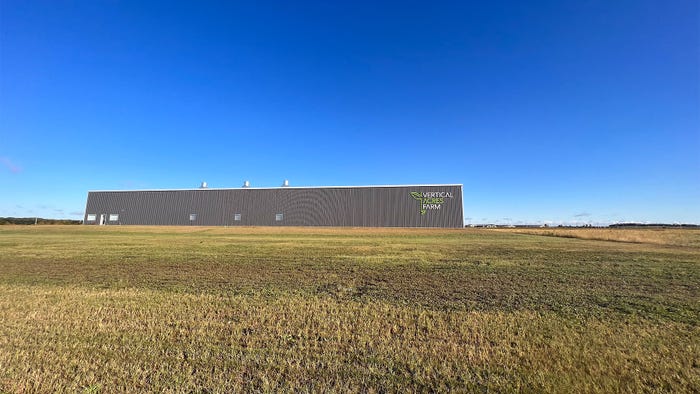December 22, 2023

by Mya Herrema
In a world grappling with challenges like population growth, climate change and food security, a new approach to agriculture is on the horizon. Vertical farming is growing crops on vertically stacked layers in a controlled environment.
“I think farmers will transition this way, and the consumers are demanding cleaner, healthier, sustainable products,” says Dan Hilarides, manager of Vertical Acres Farm in Fair Oaks, Ind. Vertical Acres is a privately owned business run by a family.
Hilarides expresses how important it is to be ahead of the curve. Farming is going to steer more toward technology.
How it works
At Vertical Acres, seeds are planted and grown hydroponically. They start in flood trays where water is recycled. After a few weeks, seedlings are moved to a new container where trays are rotated on a timer.
Each container has its own temperature and climate environment. This allows for a mix of things to be grown in the same building. These containers can produce lettuce in roughly 37 days.
Lights on top of containers indicate whether they’re running properly. Vertical Acres grows microgreens and heads of lettuce, and experiments with different herbs.
Hilarides explains that microgreens are a seven- to eight-day crop. They are started with the lights off in their own container. Microgreens start seeking light, causing them to grow and stretch. Light is then applied to green them up and finish them.
There are 20 containers in the building and a total of six workers for the whole operation. Workers oversee planting, transplanting, harvesting and retail packaging. All nutrients are held in a separate part of the facility. Workers feed plants via a dose of nutrient mix placed in the tray of plants.
Normally, Hilarides says, it takes a couple of months of growing a new product to figure out specific climate and temperatures needed for it to excel.
Recycling and reusing energy
Each container has a set of nutrients that flows through it, along with water. After these nutrients dose into the tray, the trays are recycled and used again. Hilarides prides himself on the environmental friendliness of the facility.
Employees and visitors go through a process before they enter the facility. Every person must “scrub in and scrub out,” Hilarides says. This is important so nothing disturbs the plants’ climate or environment.
“Customers are starting to demand their products be grown environmentally friendly,” Hilarides says. Vertical farming uses 95% less water than would be used in conventional production.
Krishna Nemali, controlled environment agriculture Extension specialist, is an associate professor at Purdue University. He helped Vertical Acres get started. He expresses the importance of how production there occurs with less space and less water usage.
He says indoor agriculture gives the world an opportunity to grow plants that would normally be found in a harsh desert climate.
Retail operation
Hilarides uses their big heads of lettuce for retail. These are planted in every other hole in the trays because heads get so big. Each product is in a different size tray to match their growing pattern.
They sell heads of lettuce still living, so roots stay on. This allows the lettuce to stay fresh longer than normal shelf-life items. Heads of lettuce are sold in individual clamshells.
Right now, Hilarides is experimenting with growing basil. The ability to move vegetable production inside enables selling products like basil in the winter when people’s gardens are gone.
Vertical Acres uses a broker to help find markets in its radius all over Indiana. Its products are in all local grocery stores. Vertical Acres employees do all the packaging themselves.
Rise in learning
“This is a way to learn new technology and mass-produce crops in this atmosphere,” Hilarides says.
One of the hardest challenges Hilarides had to overcome was learning how crops and containers can work together.
“Learning the environments of each container and what the plant needs to meet its full potential was a challenge,” he says.
When asked what his favorite thing is about Vertical Acres, he struggled to pick just one. He settled on “the indoor environment and the ability to grow 365.”
Herrema is a senior in ag communication at Purdue University.
You May Also Like




